El concepto
Counterfeiting is any process in which an object is created or modified in a concealed manner, with the intention of making it appear to be something it is not. We refer here to all kinds of objects: coins, banknotes, official documents, paintings and other art objects, jewellery, etc.
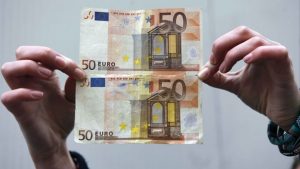
In general, counterfeiting is a criminal offence and it is therefore in our interest to have the means to detect it. This is often not difficult after a thorough analysis of the product: counterfeit coins made of material other than the original; banknotes printed on low-quality and/or defective paper; clothing with a design slightly different from what it should be, etc.
Sometimes, we find intentional imitations of objects where (for example) the brand name is similar to that of a well-known brand name. In some cases, the person concerned changes the colour of an object to make it look like the one you would want to have. There are also those who get hold of the label of a quality garment and attach it to the one they are wearing in an attempt to make their friends and acquaintances look at them with undeserved admiration. Picaresque behaviour very often leads to these and other initiatives which, strictly speaking, cannot be classified as counterfeits.
Recent cases and examples
On the contrary, what follows are undoubtedly forgeries:
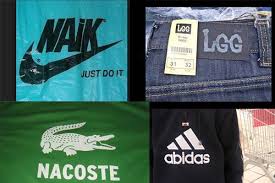
- The false sale of bookings for luxury hotels and villas in Tenerife was recently discovered in August this year. A criminal organisation is allegedly accused of having pocketed 15,000 euros in this way.
- An unbelievable case: a driver was arrested in La Coruña carrying a carnet of the República Errante Menda Lerenda (roughly translated: The Wandering Republic of Myself). Visibly upset, he insulted the officers, fled and took refuge in his house before being arrested.
- A regrettable case, which shows how some people are capable of taking advantage of the weakest: until recently, a network in Girona charged between 600 and 1,000 euros to illegal immigrants in exchange for false job contracts in the agriculture sector.
- Another even more regrettable case: the cyber-security company Check Point has detected that online offers of fake vaccination certificates and COVID tests have increased by 500% between March and May 2021.
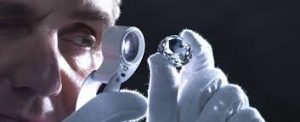
Fig. 3 – Examining jewels - In Spain, it is estimated that jewellery and watch manufacturers lose more than 200 million euros per year (13% to 18% of their turnover) due to counterfeiting; globally, this problem affects 13.5% of the total business in the European Union. Of course, tax revenue is also reduced by a not insignificant percentage; more data can be found in [1].
- We would like to make special mention of art counterfeiting. For a historical introduction to the subject, see [2]. Technological developments have greatly increased the possibilities for fraud and are now a serious threat to the sector. There are many recent cases in this respect: the museum in the southern French town of Elne has discovered that more than half of its collection is fake; experts at the Ministry of Culture’s Museum of America claim that a large part of the pre-Hispanic art on sale is counterfeit; a mathematics professor, a frustrated painter, was able to produce paintings in his own garage that he sold to the prestigious New York gallery Knoedler as authentic works by Pollock and other painters for more than $60 million, and so on.
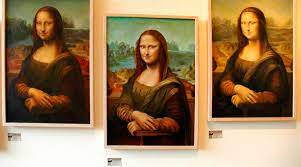
There are simple strategies that a buyer can use to identify a possible counterfeit at an early stage:
- It is advisable to know the dealer well.
- Also, do some research into the origins of the work and (why not?) the corresponding and/or accompanying documentation. The hiring of an experienced researcher or evaluator should not be dismissed.
- It is good advice to pay close attention to the details of the contract you sign.
- It is often said that good science uncovers bad art. It is reasonable to believe that a thorough examination of a work and the implementation of the latest technology will eventually uncover deception, no matter how skilled the cheat.
- Finally, under no circumstances should a dealer be allowed to put pressure to buy. If in doubt, do not buy the work. See [3] for more details.
Han Van Meegeren and Willard Libby
Han van Meegeren (1889-1947) is probably the most popular forger of the 20th century.
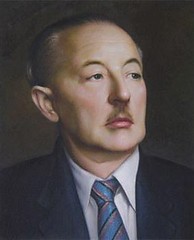
He first began as a portrait painter. After receiving unfavourable reviews, he decided to become a maker of new paintings that he attributed to Jan Vermeer or Pieter de Hooch. To this purpose, he carefully prepared his strategy: he bought authentic 17th-century canvases, mixed the colours with suitable materials using ancient formulas to ensure authenticity, used badger-hair brushes, incorporated chemicals that allowed the appearance of ageing, etc.
He spent six years perfecting these techniques and achieved such a level of perfection that the experts of the time accepted the authenticity of the works, in several cases with great enthusiasm.
His best and most famous forgeries were Supper at Emmaus and Christ with the Adulteress. He managed to sell the latter painting to Hermann Göring, Adolf Hitler’s lieutenant and designated successor. In exchange, Göring gave 137 paintings from his collection, valued at some $7 million. After the fall of the Third Reich, the Allies discovered the painting, hidden in an Austrian mine along with more than 6,500 other works stolen by the Nazis. The trail led to Van Meegeren, who was then arrested and charged with high treason.
He then decided to confess that it was a forgery. To prove it, he agreed to repaint his last Vermeer. Moreover, after a detailed and exhaustive chemical analysis, it was possible to determine the products used in the making of the works that had been found in his studio. The sentence was thus limited to one year, although he died of a heart attack one month and a half later.
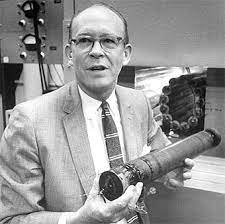
Allegedly, Göring was furious when he learned of the fraud. By then, he was already in prison and had been sentenced to death. As is well known, he decided to commit suicide on the eve of his execution.
Willard Frank Libby (1908-1980) was a chemical physicist best known for his role in the development of carbon-14 dating techniques. For this he was awarded the 1960 Nobel Prize in Chemistry. For archaeology and palaeontology, the appearance of these techniques was a real revolution at the time.
During World War II, Libby participated in the famous Manhattan Project and became interested in gaseous diffusion processes for uranium enrichment. Later, he became professor at the Institute for Nuclear Studies at the University of Chicago, where his most notable contributions excelled. In his later years, he held a professorship at the University of California at Los Angeles, where he launched the first Environmental Engineering Programme, among other things designed to lower air pollution levels in the city.
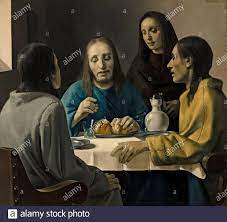
Carbon-14 (or radiocarbon) is a radioactive isotope of carbon, discovered in 1940. Libby is thought to have been the first to suggest that it existed in living matter. Based on this idea, the amount of carbon-14 in a sample can indicate the age of the sample (see next section).
Detecting age
The radiocarbon dating method is the most reliable isotope-based technique for determining the age of organic samples less than 50,000 years old. The method is based on the exponential decay law of radioactive isotopes, formulated and experimentally proven by Rutherford. This law, in turn, is a consequence of the mathematical modelling of radioactivity.
Given a sample, let us call \(N(t)\) the number of carbon-14 atoms present at the instant \(t\). Rutherford’s observations imply that the evolution in time of the \(N\) function obeys the relation
$$
\dot N = -\lambda N,
$$
where \(\lambda\) is a positive constant. On the other hand, if at \(t=0\) the number of atoms is \(N_0\), we have
$$
N(0) = N_0.
$$
These two relations together give the value of \(N(t)\) for each \(t\):
$$
N(t) = N_0 \, e^{-\lambda t} \quad \forall t \geq 0.
$$
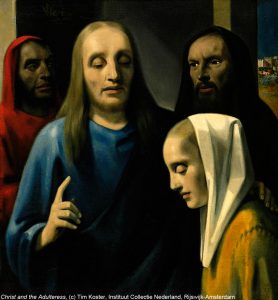
If we knew \(\lambda\) and \(N_0\), we could determine \(N(t)\) for each \(t\). Also, knowing \(\lambda\), \(N_0\) and \(N(T_*)\) (the value of \(N\) at time \(T_*\)), we could determine \(T_*\) (i.e., the “age” of the sample). Indeed, we can deduce from the above relation that
$$
T_* = \frac{1}{\lambda} \, \log\left(\frac{N_0}{N(T_*)}\right) .
$$
The calculation of \(\lambda\) is not difficult: it is enough to find out how long it takes for any sample to halve the number of atoms. Indeed, if we call this time \(T_0\), it follows that
$$
\frac{1}{2} N_0 = N_0 \, e^{-\lambda T_0} \ \Rightarrow \ \lambda = \frac{\log 2}{T_0}
$$
At the time, Libby calculated a first value of \(T_0\) equal to \(5568\) years. Later, at Cambridge University, a better approximation was obtained, equal to \(5730\) years.
The determination of \(N_0\) is easy when the sample corresponds to organic matter comparable or equivalent to that found in living beings. This is the case if, for example, we are trying to determine the age of a plant or animal fossil.
In other cases, for example when the sample corresponds to an inorganic pigment, determining \(N_0\) is not so simple. One has to resort to indirect methods, mainly based on the analysis of white lead pigment, the main white pigment used from antiquity until the 20th century.

A first indirect method of determining \(N_0\) is described in reference [4]. It can be seen there that the obtained values, although not very precise, can already be used to rule out, in the case of the pictures painted by Van Meegeren, that they are objects from the time of Vermeer.
Recently, methods have been developed which make it possible to refine the value of \(N_0\) more precisely and allow to date many other works, see [5].
To conclude, let us point out that there also exist other dating methods, based on image analysis, geometric identification, etc. We will talk about that in a future post…
Para saber más
- https://www.goldandtime.org/noticia/80919/goldtime/200-millones-de-euros-y-1.600-empleos-menos-por-la-pirateria.html
- https://evemuseografia.com/2017/07/27/breve-historia-de-la-falsificacion-de-arte/
- Elena Goukassian (2020): How to Make Sure You’re Not Buying a Forgery. Art Market. Artsy: https://www.artsy.net/article/artsy-editorial-buying-forgery
- M. Braun (1993): Differential equations and their applications. An introduction to applied mathematics. Fourth edition. Texts in Applied Mathematics, 11. Springer-Verlag, New York, 1993.
- L.Ortiz-Herrero, I.Cardaba, S.Setien, L.Bartolomé, M.L.Alonso, M.I.Maguregui (2019): OPLS multivariate regression of FTIR-ATR spectra of acrylic paints for age estimation in contemporary artworks, Talanta, Volume 205, 1 December 2019, 120114.

Leave a Reply